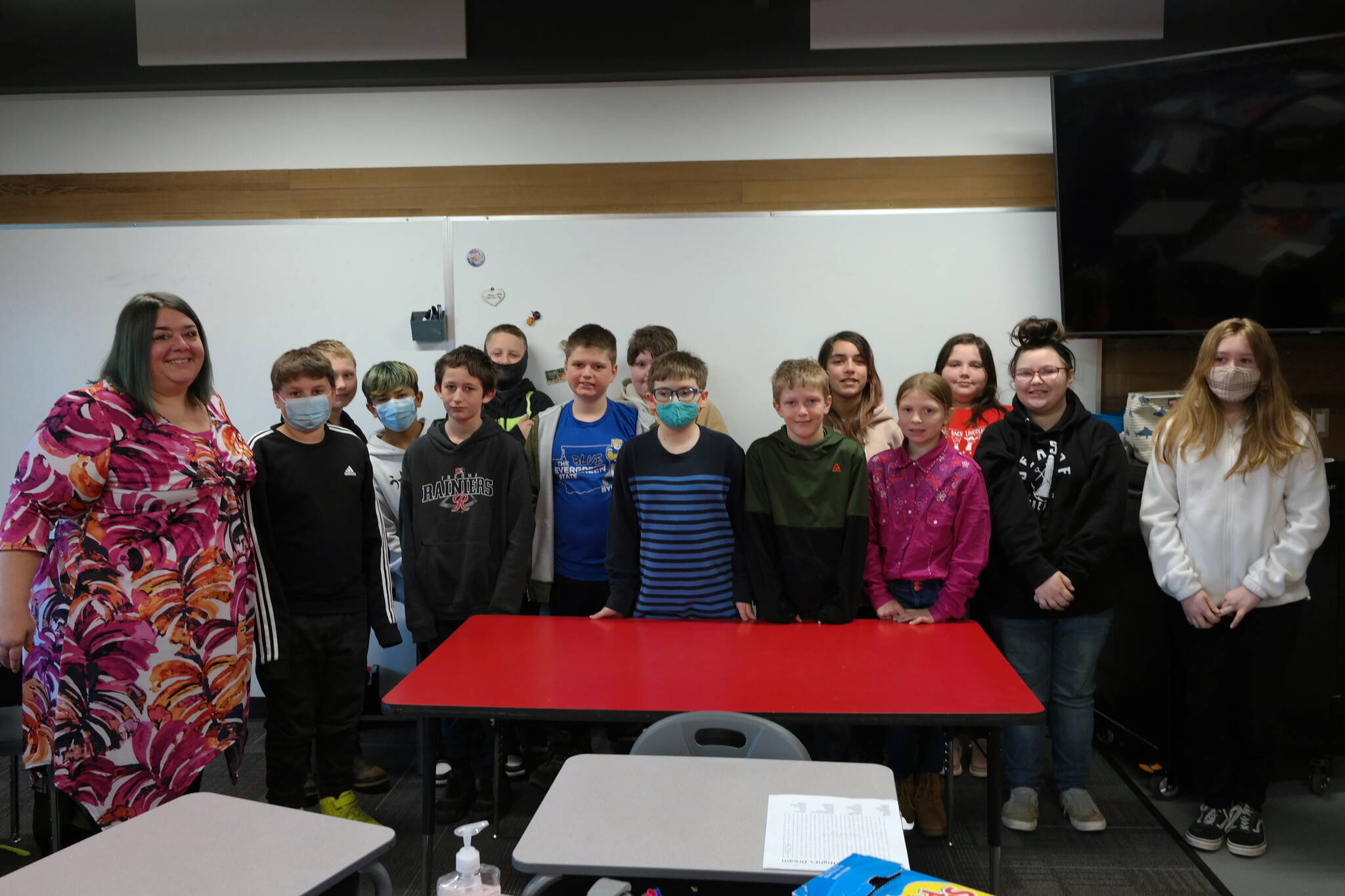What do Whatcom County, Skamania County, and Grays Harbor County all have in common? As of this month — due to the diligent work of Ms. Andrews’ fifth grade class at Lincoln Elementary School in Hoquiam — it’s that they all have designations for Sasquatch protection.
Sharpening their persuasive skills, the students wrote to the Grays Harbor County Board of Commissioners on March 16 requesting that additional protections be made for the elusive local Sasquatch population.
Students engaged in a thorough research process to first determine their stance on the existence of Bigfoot before deciding if laws were needed to protect the creature.
“They had to make a decision from day one if Bigfoot was real and hadn’t been discovered yet, or that it was just a big bear and people had misidentified it,” said Ms. Andrews. “They had to do research on Bigfoot, and they could change their mind as they went.”
According to Andrews, the class was fairly evenly split on day one, with about 60 percent of students in favor of Bigfoot’s existence and 40 percent opposed.
Presley Mitchell is one of the students who agrees with the existence of Sasquatch, and she has the evidence to back it up.
“I feel like Sasquatch should be protected,” she said. “A lot of the evidence we found shows that they’re real, and I found some footprints not from us. I took some shoes outside and the prints didn’t match any of them.”
For Harley Quimbey, author of the letter sent to the commissioners, additional protections for the Sasquatch community are necessary so their existence can be proven once and for all.
“As we were writing the letter, and did more and more research, we wanted to know if it was real,” she said. “We put in our letter that we wanted laws to protect the Sasquatch so kids can have more research and know for real.”
Some of their peers, however, participated in the healthy debate by representing differing perspectives.
Dawson McFadden and Peyton Wideman enjoyed working with each other to oppose the additional protections. They were a part of the initial group that believed in the existence of Bigfoot, but they have reservations about the ramifications of the protection area.
“Bigfoot could be a harm to other wildlife in the future. There are already some species that are rare and hard to find, and you can only get one hunting tag every couple of years,” said McFadden.
Wideman agrees, and is concerned that a robust Sasquatch population could disrupt the food chain and endanger other species, such as white and black tailed deer.
The students of Ms. Andrew’s class seem to have found some middle ground between their different stances. Some students, including McFadden, believe the designation of protection could be lifted in the future when the Sasquatch population begins flourishing.
“When the species starts thriving, we hope then we can perform research and do something about the overpopulation,” said Kyson Dixon. “We’re worried about right now, not about future.”
The resolution passed by the Board of Commissioners acknowledges that if Sasquatch exists, it is not flourishing, and is likely an endangered species requiring protection from extinction. While no legal consequences were added to the resolution, it asks that residents recognize and honor the area as a “Sasquatch protection and refuge area.”
The students of Ms. Andrews’ class learned of their success upon returning from spring break last week. After completing their project, they had sent the letter “just for fun,” and never expected it to make a permanent mark on Grays Harbor.
“It was hard to get them to believe me,” said Andrews about telling her class the resolution had passed. “I told them ‘You just changed the world in a little way. You got something on the books,’ — they took the time to write to their local government, and their local government acknowledged the fact that they did that. I hope they take that into the rest of their lives.”
The process has helped her students practice persuasive and opinion-based skills, but also to recognize the impact they can have through traditional action channels.
“We’re just 11- and 10-year-olds that basically made a law and convinced the County Commissioners,” said Quimbey.
And what did she do after she heard the news?
“I went home and partied.”
Even McFadden, with his reservations about additional protection, was happy that his peers had seen their request realized. The students are excited to see how their work may help the Sasquatch population thrive and provide the possibility for future scientific research.
“Young students can make a big difference,” said Ashtin Franco-Foster.



